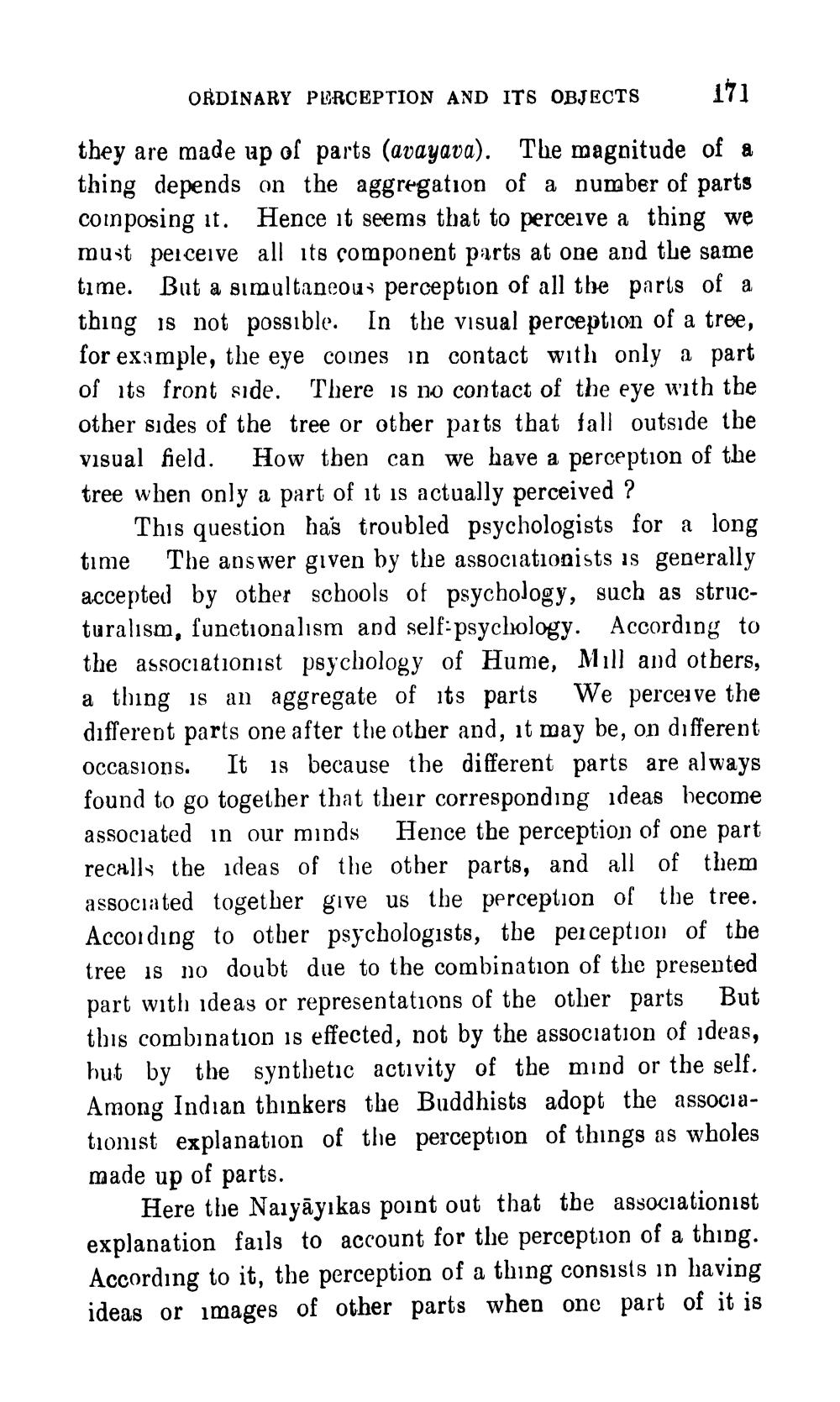________________
ORDINARY PERCEPTION AND ITS OBJECTS 171 they are made up of parts (avayava). The magnitude of a thing depends on the aggregation of a number of parts composing it. Hence it seems that to perceive a thing we must perceive all its component parts at one and the same time. But a simultaneous perception of all the parts of a thing is not possible. In the visual perception of a tree, for example, the eye comes in contact with only a part of its front side. There is no contact of the eye with the other sides of the tree or other parts that fall outside the visual field. How then can we have a perception of the tree when only a part of it is actually perceived ?
This question has troubled psychologists for a long time The answer given by the associationists is generally accepted by other schools of psychology, such as structuralism, funetionalism and self-psychology. According to the associationist psychology of Hume, Mill and others, a thing is an aggregate of its parts We perceive the different parts one after the other and, it may be, on different occasions. It is because the different parts are always found to go together that their corresponding ideas become associated in our minds Hence the perception of one part recalls the ideas of the other parts, and all of them associated together give us the perception of the tree. According to other psychologists, the perception of the tree is no doubt due to the combination of the presented part with ideas or representations of the other parts But this combination is effected, not by the association of ideas, hut by the synthetic activity of the mind or the self. Among Indian thinkers the Buddhists adopt the associationist explanation of the perception of things as wholes made up of parts.
Here the Naiyāyıkas point out that the associationist explanation fails to account for the perception of a thing. According to it, the perception of a thing consists in having ideas or images of other parts when one part of it is




